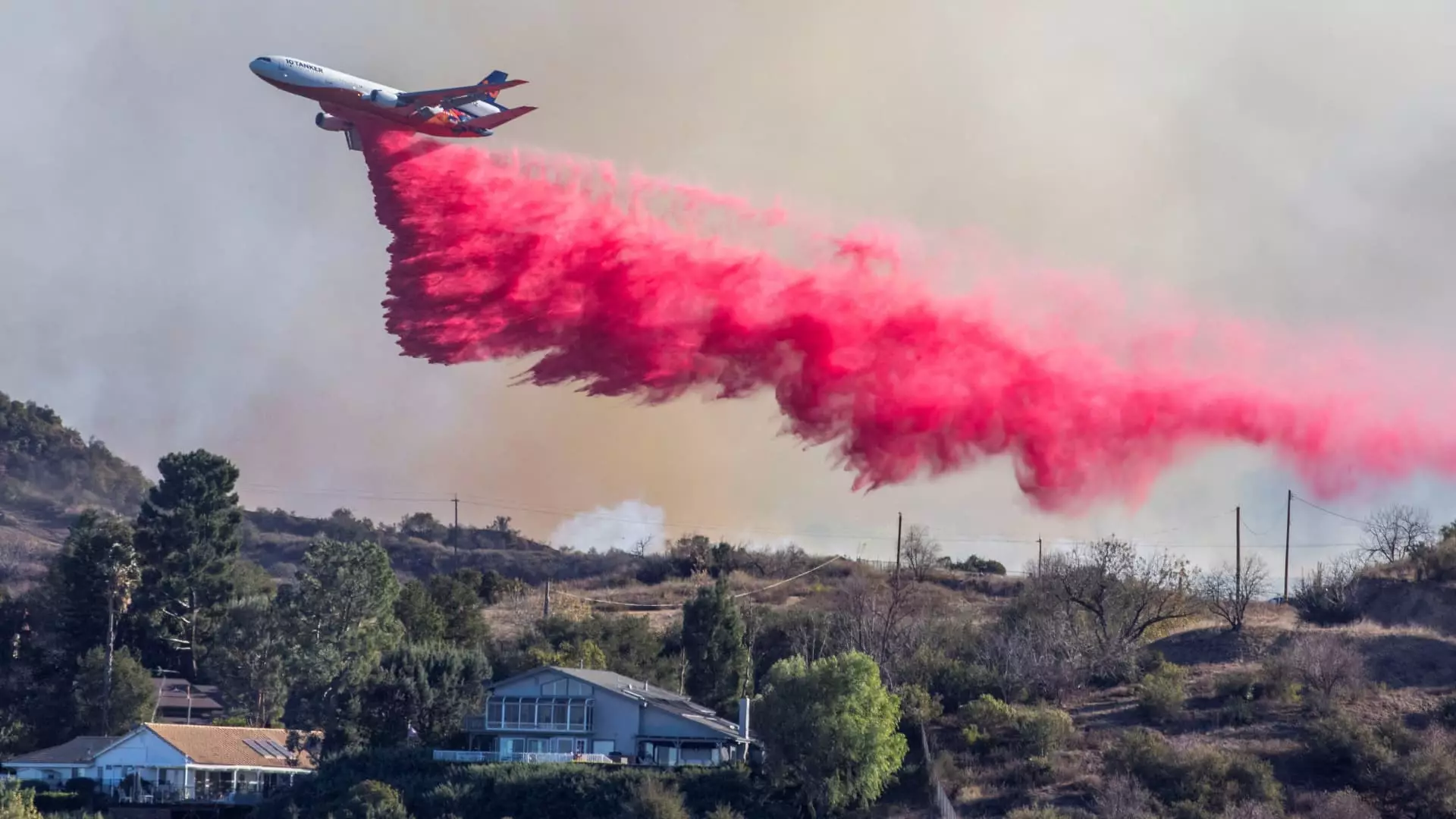The recent surge in wildfires across the Los Angeles region has underscored an alarming reality: the current firefighting infrastructure may be grossly inadequate to meet increasing demands. While wildfires have long been part of the natural landscape, they are becoming more frequent and destructive, as evidenced by catastrophic events such as the Palisades and Eaton fires. This escalation has prompted both public and private firefighting organizations to adapt quickly to new threats that arise unexpectedly and with little warning, often during what is typically considered the off-season for wildfires.
At the forefront of aerial firefighting efforts are companies like 10 Tanker Air Carrier and Bridger Aerospace, which supplement the capabilities of government entities like the California Department of Forestry and Fire Protection (Cal Fire). Despite having the largest civil fleet of firefighting aircraft, Cal Fire’s resources are stretched thin. The demand for aerial firefighting services is no longer relegated to a certain timeframe; it has become a year-round necessity. The U.S. Forest Service has expanded contracts with private firms, such as the $7.2 billion 10-year agreement with 10 Tanker, reflecting the urgency and importance of bolstering aerial firefighting capabilities.
The cost of firefighting is steep, not just in terms of resources deployed but also in operational expenditures for the aircraft themselves. The conversion of commercial jets into fire-fighting aircraft involves significant financial investment and time. Kevin McCullough from Aero Air explains that it can take about 18 months to adapt an aircraft for firefighting. Such a lengthy process can create gaps in aerial support, particularly when wildfires erupt unexpectedly. Moreover, private firms like Bridger Aerospace have been experiencing record revenue during these months of increasing wildfire incidents, highlighting an unfortunate paradox where a crisis leads to financial profitability for those involved.
As the landscape of aerial firefighting evolves, technological advancements are critical for improving efficiency and effectiveness. Fire retardants and water-drop mechanisms are maturing, allowing aircraft to target flames with greater precision. The adoption of next-gen water scoopers from manufacturers like De Havilland is showing promise for future firefighting efforts; these aircraft are being designed for performance and resilience under extreme conditions, expected to debut in 2028. Innovations such as improved cockpit air conditioning and refined water-drop controls exemplify the proactive steps companies are taking to enhance their preparedness in a climate increasingly impacted by severe weather patterns.
Beyond the machinery involved, a dedicated group of aerial firefighting pilots and crews is the backbone of these operations. The personnel often come from varied backgrounds, including military and commercial aviation, bringing with them a diverse skill set that is crucial when navigating the complexities of firefighting in hostile environments. Joel Kerley from 10 Tanker noted that the work can resemble “the Super Bowl” of fire response, emphasizing the high stakes and the gravity of their mission. With seasoned professionals and trained crews adapting to the volatile conditions during operations, the human element in aerial firefighting cannot be underestimated as they serve as the first line of defense against advancing flames.
As data from environmental agencies indicates a troubling trend of escalating wildfire incidents globally, there is a pressing need for both improved firefighting technology and comprehensive strategies for wildfire prevention and management. Joel Kerley expressed concern about the growing divide between need and available resources, stating, “There’s not enough air tankers to go around.” As countries worldwide, including Australia, ramp up their capabilities, the U.S. must follow suit, considering investments in expanding its fleet of firefighting aircraft alongside developing more robust policies addressing the root causes of climate change that exacerbate wildfire frequency and intensity.
The reality of wildfire season is no longer confined to specific months; it has evolved into a year-round challenge that calls for immediate attention and action. The melding of public resources and private expertise is essential to safeguard communities while addressing the looming threats posed by increasing wildfires. As the planet continues to grapple with climate change, ensuring that both aerial resources and ground crews are adequately equipped and prepared to act becomes a non-negotiable necessity. Investments in training, technology, and infrastructure will be pivotal to protecting lives and property in the face of an uncertain future dominated by the specter of wildfires.

